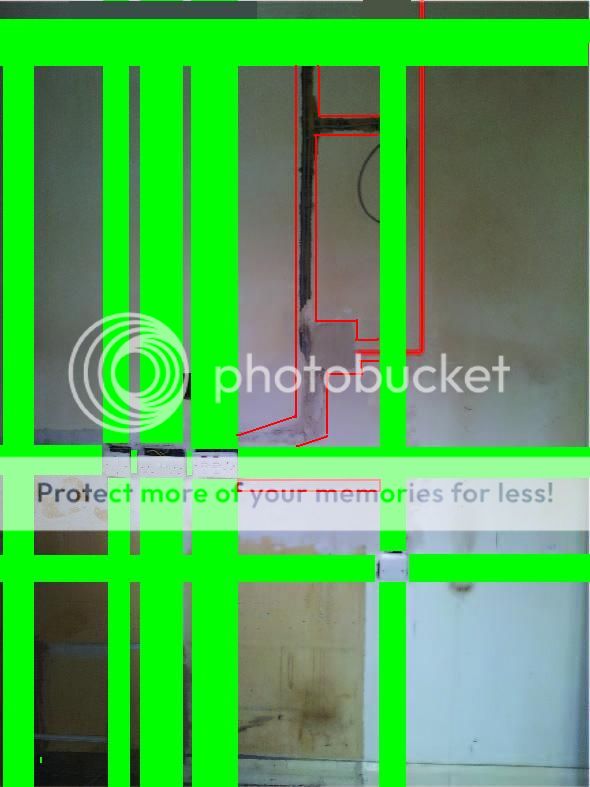I've outlined non-compliant cables in red for you too.

And the vertical existing cooker cable?
I've outlined non-compliant cables in red for you too.

I've outlined non-compliant cables in red for you too.
And the vertical existing cooker cable?
I've outlined non-compliant cables in red for you too.
And the vertical existing cooker cable?
That's already done in red!
So the area which does not comply is the safe zones.
The radial add on are OK.
I can not also believe he spurred off the back socket near the door when the old one was 6" above......
So the area which does not comply is the safe zones.
Correct.
The radial add on are OK.
We're not sure yet, but I wouldn't hold your breath looking at the rest of his work.
How is the consumer unit photo coming on?
I can not also believe he spurred off the back socket near the door when the old one was 6" above......
If the existing socket is part of the ring, and the new socket really is a spur, then the chances are the concealed joint is not allowed either.
So the area which does not comply is the safe zones.
Correct.
The radial add on are OK.
We're not sure yet, but I wouldn't hold your breath looking at the rest of his work.
How is the consumer unit photo coming on?
I can not also believe he spurred off the back socket near the door when the old one was 6" above......
If the existing socket is part of the ring, and the new socket really is a spur, then the chances are the concealed joint is not allowed either.
Assuming the old socket orginally had two cables at it, yes.
A regular in line crimp can only have one wire in each end of it.
Different size crimps in different size colours.
For example, 2.5 mm2 live and neutral wires would use blue crimps.
The earth would typically be 1.5 mm2, and would use a red crimp.
On the cooker cable, I would expect to see yellow crimps for L and N, and blue for the earth. BUT THAT WOULD BE FOR 6.0 mm2 COOKER CABLE, don't want to start speculating just yet.
And, of course, should not be done on solid cores.Crimped joints can only be concealed if done properly.
Only two wires in a regular crimp butt.
Correct size crimp must be used.
Cables and joint must be in safe zone.
Correct crimping tool must be used.
Crimp would need to be sleeved (heat shrink?) or in an enclosure if covered by filler, IMO.
If you need to find a tradesperson to get your job done, please try our local search below, or if you are doing it yourself you can find suppliers local to you.
Select the supplier or trade you require, enter your location to begin your search.
Are you a trade or supplier? You can create your listing free at DIYnot Local
